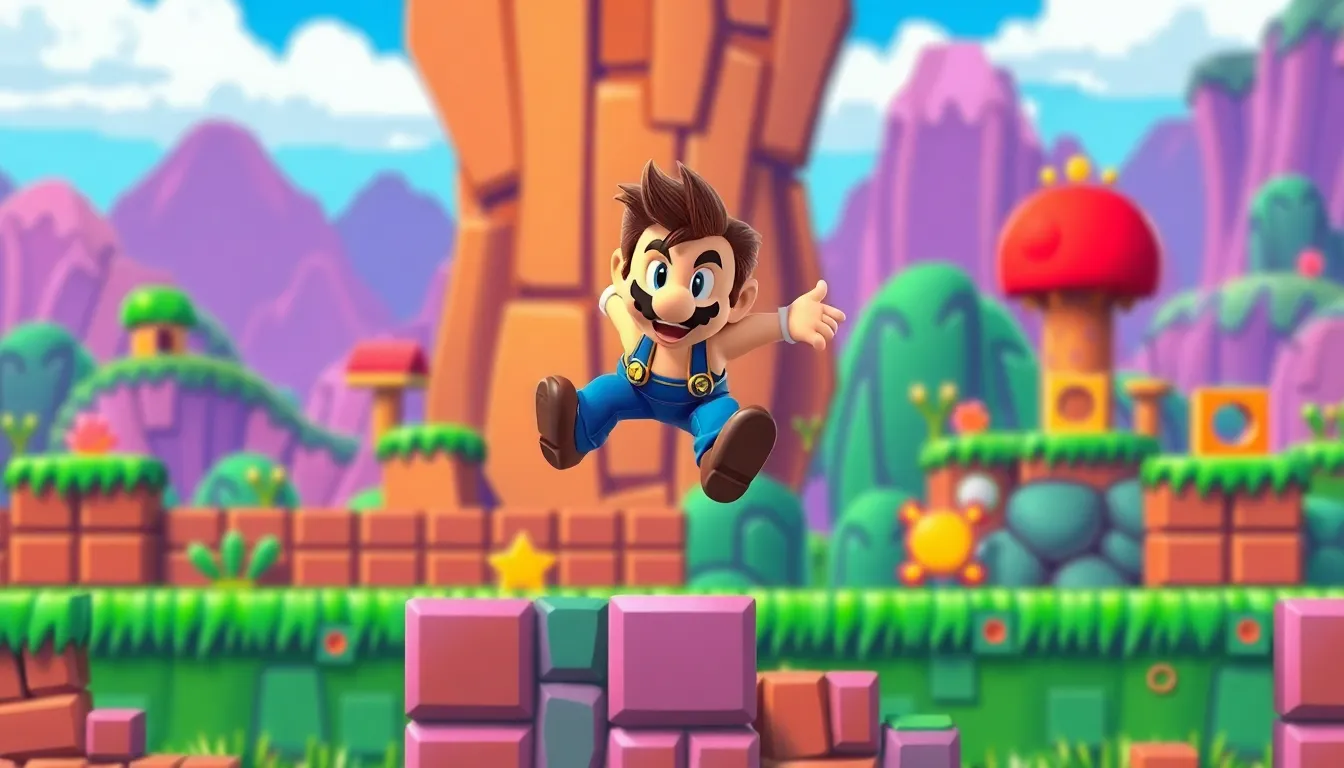Table of Contents
ToggleIn a world where unlimited scrolling and endless lives seem like a dream, the concept of “limited lives” can feel downright cruel. Picture this: you’re deep in a game, adrenaline pumping, only to face the dreaded countdown. Suddenly, every move feels like a high-stakes gamble. It’s like playing poker with a cat—one wrong move, and you might just lose your last chance to win big.
Limited lives add a unique twist to gaming, turning casual players into strategy gurus overnight. They force gamers to think twice before charging into battle, making every moment feel thrilling. So why do we keep coming back for more? Because the thrill of the chase and the sweet taste of victory are hard to resist. Dive into the world of limited lives, where every heartbeat counts and every decision could lead to glory or game over.
Understanding Limited Lives
Limited lives create a unique dynamic in gaming. This mechanic introduces intense challenges and heightens player engagement.
Definition of Limited Lives
Limited lives refer to the finite number of chances a player has to achieve their goal within a game. Players often experience a strong sense of urgency because once all lives are lost, the game typically ends. This concept forces players to operate with caution, as each move carries weight. It alters strategies, encouraging quick decision-making and risk assessment. Titles like “Super Mario” and “Contra” are prime examples where limited lives become integral to the gameplay. These constraints amplify the thrill, as the potential for defeat lurks around every corner.
Context in Literature and Media
Limited lives manifest prominently across various media, including literature and films. In narratives, characters often face circumstances where their opportunities are limited, reflecting the pressure found in gaming. Themes of survival and competition emerge repeatedly. Iconic stories like “The Hunger Games” illustrate this concept, showcasing characters who navigate life-or-death scenarios with limited resources. This idea resonates with audiences, creating suspense and emotional investment. The portrayal of time constraints and imminent danger captivates readers and viewers alike, demonstrating the broader appeal of limited lives beyond gaming.
The Concept of Limited Lives in Gaming

Limited lives significantly shape how players engage with games, introducing layers of strategy and urgency. This mechanic elicits strong emotional responses, making every decision critical.
Impact on Player Experience
Limited lives create an environment where players must prioritize their actions. Pressure intensifies as players navigate challenges, prompting them to develop effective strategies quickly. Players often experience heightened feelings of suspense and anxiety with each life lost. Decisions tend to become more calculated as they assess potential risks and rewards. Engaging with limited lives fosters a deeper connection to the game, as players invest in their character’s journey more profoundly. A finite number of chances transforms gameplay into a memorable experience, imparting a sense of accomplishment upon success.
Examples of Games Featuring Limited Lives
Many classic and modern games incorporate limited lives into their design. “Super Mario” relies heavily on this mechanic, offering players a finite number of attempts to tackle its challenging levels. “Contra” also exemplifies this system, requiring players to demonstrate skill to navigate obstacles. “Sonic the Hedgehog” demands quick reflexes, with players adapting to dynamic environments under the pressure of lives remaining. “Donkey Kong” showcases how limited lives can heighten the stakes in puzzle-solving scenarios. Newer titles like “Celeste” blend limited lives with narrative depth, encouraging players to embrace perseverance through difficult gameplay.
Psychological Perspectives on Limited Lives
Limited lives in gaming trigger unique psychological responses that affect both decision-making and behavior. Players navigate high-pressure environments, driving the depth of their engagement and strategy.
Effects on Decision-Making
Limited lives lead players to prioritize their strategies more effectively. Increased urgency prompts quick evaluations of risk and reward. Choices become weighted heavily with the potential for immediate consequences. Players often opt for safer paths, balancing exploration with caution. Taking calculated risks becomes essential, especially as the number of lives dwindles. This dynamic influences longer-term planning, as players adapt their tactics based on remaining chances.
Behavioral Responses to Limited Lives
Behavioral responses to limited lives manifest through heightened arousal and stress. Players frequently experience anxiety as they near game-over screens, leading to varied emotional reactions. Frustration can emerge from repeated failures, driving some individuals to refine their skills or shift strategies. Others may feel compelled to play more cautiously, adopting defensive playstyles. This emotional whirlpool fosters an investment in personal growth and skill mastery. Ultimately, limited lives not only shape gameplay but also enhance personal resilience.
The Future of Limited Lives
The future of limited lives in gaming offers numerous possibilities for innovation and engagement.
Trends in Game Design
Game designers increasingly aim to balance challenge and accessibility. Modern titles often incorporate mechanics that allow players to experience limited lives without the frustration typically associated with them. Some games now feature checkpoints or the option to respawn after losing a life, creating a choice for players. Titles like “Celeste” exemplify this approach, providing players with the opportunity to embrace challenges while reducing potential stress. Developers understand that while limited lives create tension, promoting a supportive gameplay environment enhances enjoyment. Gamers appreciate when their decisions shape the outcome and feel empowered by their choices.
Evolving Player Expectations
Player expectations evolve with each gaming generation. Today’s players seek deeper narratives and emotional engagement alongside challenging mechanics. Limited lives contribute to the overall experience, yet players increasingly expect accessibility features that accommodate diverse skill levels. They want the thrill of limited lives but also the flexibility to tailor experiences according to their preferences. As a result, designers hone in on incorporating adaptive difficulty settings, transforming how limited lives impact gameplay. Titles will likely continue to evolve, ensuring that the excitement of limited lives meshes seamlessly with inclusive design practices. Enhanced player agency will ultimately define the next phase of gaming.
The concept of limited lives continues to captivate gamers by blending challenge with excitement. This mechanic not only heightens the stakes but also fosters a deeper emotional connection to gameplay. Players thrive on the urgency and strategic thinking required to navigate these high-pressure scenarios.
As game design evolves, the integration of limited lives remains relevant, pushing developers to innovate while maintaining accessibility. By balancing challenge with player experience, the future of gaming promises to keep the thrill of limited lives alive, ensuring that both new and veteran players remain engaged.







